
MSXB 028: Simultaneous Sampling Board
Technical Note TN-180 Version 1.0
The Simultaneous Sampling Board, part number MSXB 028, acquires up to 16 analog signals simultaneously, allowing a Data Acquisition Processor to acquire multi-input data without the time skew usually associated with multiplexed data acquisition systems.
Six models of Simultaneous Sampling Boards currently are available from Microstar Laboratories:
MSXB 028-01 WAGO 32-point quick-connect termination
MSXB 028-02 WAGO terminals with external power connections
MSXB 028-03 screw terminal connections
MSXB 028-04 screw terminals with external power connections
The MSXB 028 also has different models for stand-alone operation or connection to an analog backplane. The backplane models have an unshielded plastic connector, and this connector is not compatible with the cables used by the stand-alone model. The MSXB 028 also is available with an enclosure. Contact your Microstar Laboratories supplier for more information about available options.
The number of input channels can be expanded to 256 by using multiple boards. The Simultaneous Sampling Board uses the same input expansion addressing scheme as the Analog Input Expansion Board. Simultaneous Sampling Boards may be used in conjunction with other accessory boards; however, there are addressing and input restrictions, as explained in this Technical Note.
Hardware Configuration
The MSXB 028-01, MSXB 028-02, MSXB 028-03, and MSXB 028-04 are connected to a Data Acquisition Processor using the MSCBL 040-01 or MSCBL 041-01. These 68-line cable connect the analog connector of a Data Acquisition Processor to connector J2 of the Simultaneous Sampling Board.
The analog backplane models are connected to the analog backplane MSXB 030-01 by plugging J2 of the Simultaneous Sampling Board into one of the analog bus connectors, J1-J10 of the MSXB 030-01.
Note: Never connect or disconnect the Simultaneous Sampling Board from the Data Acquisition Processor or the analog backplane while power is applied to any of them.
The following diagram shows the locations of the connectors and jumpers on the board.
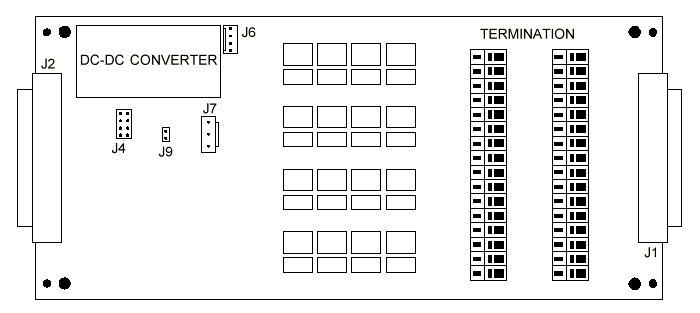
Figure 1. MSXB 028 Jumper and Connector Locations
Connecting Analog Input Signals
Analog signals are connected to the Simultaneous Sampling Board through either the 32-point quick-connect termination panel or through connector J1. Discrete wires are connected to the termination panel, and signals via a 68-line cable are connected to J1.
Each quick-connect point is labeled with the signal name. The pinout of connector J1 is shown in the following diagram:
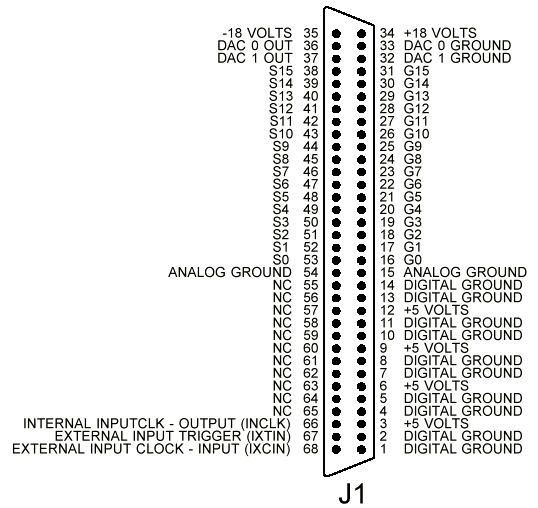
Figure 2. Pinout of Analog Connector J1
The analog inputs of the Simultaneous Sampling Board may have voltages applied when power is on or off. Maximum allowable input voltage is +/-15 volts.
Software Configuration
The signals from a Simultaneous Sampling Board appear to DAPL in two input pin ranges, each consisting of either 16 single-ended input pins or 8 differential input pins. Any combination of single-ended or differential inputs may be used. As shipped from Microstar Laboratories, a Simultaneous Sampling Board occupies the input pins S0-S15 (D0-D7).
Reading from any pin in the address range of S0 to S255 places all the sample and hold amplifiers on all the Simultaneous Sampling Boards into track mode, which provides settling time between samples. This is a dummy reading and the value from this input channel pipe should be ignored. Reading from any pin in the lower address range of S0 to S255 gives a valid corresponding to the input signal, as held on the last transition from track mode to hold mode.
An input procedure for acquiring signals simultaneously usually includes one SET command addressing and input pin in the upper address range, followed by several SET commands addressing the pins to be sampled.
The following is a typical input procedure definition. The input procedure A acquires the signals on S0 and S1 simultaneously. The FORMAT command sends the input data to the PC:
RESET
IDEF A 3
SET IPIPE0 S256
SET IPIPE1 S0
SET IPIPE2 S1
TIME 1000
END
PDEF B
FORMAT(IPIPE1, IPIPE2)
END
START A, B
Note that data from input channel pipe 0 are ignored. The only function of the SET IPIPE0 S256 command is to place the Simultaneous Sampling Board into track mode.
Notes:
- At a gain of 1 all signals must be converted within 10,000 microseconds of the transition from track to hold.
- At a gain of 10 all signals must be converted within 1,000 microseconds of the transition from track to hold.
- Simultaneous Sampling Boards should not be used at gains greater than 10.
- Readings in track mode show small offsets from the corresponding readings in hold mode. This is normal, as offset compensation is adjusted only for hold mode.
- The Simultaneous Sampling Board must be held in track mode for a minimum of 12 microseconds before switching to hold mode. This is to provide adequate settling time for large voltage swings.
More Than One Simultaneous Sampling Board
Several Simultaneous Sampling Boards can be connected together to provide simultaneous acquisition of more than 16 inputs. When more than one Simultaneous Sampling Board is used, the J2 connectors of all Simultaneous Sampling Boards are tied together using a daisy-chained cable.
Note: External power is required when more than two Simultaneous Sampling Boards are used.
Two connectors must be set when using more than two boards: J4 and J9.
Each Simultaneous Sampling Board must be configured to recognize a specific input pin range. The range is selected by J4, a header of two rows on .100 inch centers. Connector J4 is located below the DC-to-DC converter and to the right of J2. Jumpers are placed horizontally, connecting like numbers.
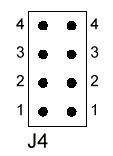
Single-ended Differential Hold mode Hold mode Board Number Jumpers 0-15 ............ 0-7 .............. 0 ......... 1, 2, 3, 4 16-31 ........... 8-15 ............. 1 ......... 1, 2, 3 32-47 ........... 16-23 ............ 2 ......... 1, 2, 4 48-63 ........... 24-31 ............ 3 ......... 1, 2 64-79 ........... 32-39 ............ 4 ......... 1, 3, 4 80-95 ........... 40-47 ............ 5 ......... 1, 3 96-111 .......... 48-55 ............ 6 ......... 1, 4 112-117 ......... 56-63 ............ 7 ......... 1 128-143 ......... 64-71 ............ 8 ......... 2, 3, 4 144-159 ......... 72-79 ............ 9 ......... 2, 3 160-175 ......... 80-87 ............ 10 ........ 2, 4 176-191 ......... 88-95 ............ 11 ........ 2 192-207 ......... 96-103 ........... 12 ........ 3, 4 208-223 ......... 104-111 .......... 13 ........ 3 224-239 ......... 112-119 .......... 14 ........ 4 240-255 ......... 120-127 .......... 15 ........ none |
Connector J9 enables the address on J4. J9 is located to the right of J4. The J9 connector on each board should have a jumper installed when several Simultaneous Sampling Boards are used. When J9 does not have a jumper, the Simultaneous Sampling Board is enabled independent of the address provided by the DAP.
Note: When a Simultaneous Sampling Board is used with other accessory boards, no boards can use inputs in the S256-S511 range. Also, make sure that all boards use different input pin ranges to avoid addressing conflicts.
External Trigger Connection
An external trigger signal can be connected to connector J6 to provide hardware triggering. J6 is a header of one row on .100-inch centers. The connector J6 is Molex part number 22-23-2041. J6 is located to the right of the DC-to-DC converter.
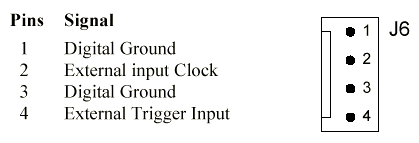
External signals connected to J6 must be in the standard TTL range of 0 to +5 volts. The pins on J6 connect directly to the pins on a Data Acquisition Processor.
The external trigger input signal and external clock input signal can be connected to pins 67 and 68 of J1 is connector J6 is not in use.
External Power Connections
On MSXB 028-02 and -04, connector J7 provides connection for external power for systems with more than two Simultaneous Sampling Boards. Connector J7 is a single row header on .156-inch centers and is located below the DC-to-DC converter. J7 is Molex part number 26-60-4030, which mates with Molex part number 09-50-3031. MSXB 028-02 and -04 each require 1.0 Amp of power.
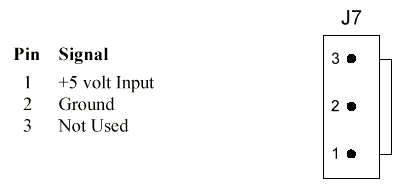
Note: It is best to power the MSXB 028-02 and -04 from the host PC's power supply so that both the Simultaneous Sampling Board and the DAP are powered on and off at the same time. If this is not practical, then external power to the Simultaneous Sampling Board should be applied before powering on the DAP and should be disconnected after powering off the DAP.
View other Technical Notes.